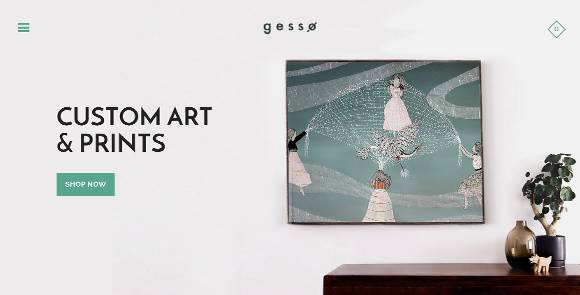
I joined CrossFit three months ago. My best friend and a close colleague are CrossFit believers and for the past few years have consistently nudged me to give it a go. I never took them up on the suggestion, but in March I happened to cancel my membership at Crunch Gym so I figured why not. I Googled “CrossFit in Chinatown New York,” found the Bowery CrossFit gym, and then I looked up reviews on Yelp and fitness blogs and checked out their Facebook (I was told to do this because the quality of coaches can vary from gym to gym). Five out of five on Yelp and positive reviews, so I signed up and have been talking about CrossFit since.
This is a the classic example of how cult fitness brands convert. In addition to having a near-fanatical community base, cult brands receive unsolicited word-of-mouth (and social media) advertisement from ardent customers. CrossFitters, in particular, are notorious for this. See meme below. Basically if you haven’t tried CrossFit, you’ve probably heard of it from a friend of a friend, seen the workout videos on Instagram or watched a clip of the CrossFit Games on YouTube.

If cult fitness brands are heavily fueled by the evangelism of their community offline and content on social media, how does this impact their website approach? To explore this question I’ve taken an in-depth look at CrossFit’s website strategy when it comes to acquiring new members and maintaining an on-going relationship with existing members. I’ve focused on branding, content, and usability considerations in the following areas:
- Homepage
- New Member Sign Up Experience
- Lifestyle Content
- Existing Member Class Booking Experience
Homepage
CrossFit’s homepage looks like a forum site, packed with content and a little outdated when it comes to its look and feel. While the content density might be a bit overwhelming at first, there is no confusion about what CrossFit is and what its community cares about. By posting daily community news, which takes up a third of the homepage center real estate, CrossFit shows what the brand stands for (rather than explaining it through a mission statement).

The posts feature updates from the CrossFit Games, stories about CrossFit member journeys, and the official WOD (Workout of the Day). For this reason, CrossFit’s homepage can be seen as more of an information hub for existing community members than a marketing site for newcomers with CrossFit 101 information.
Interestingly, this was a deliberate shift made in 2003. Take a look at CrossFit’s original website from 2001 (see a screenshot from the Wayback machine below). You’ll notice that the homepage is solely dedicated to explaining what CrossFit is and its fitness philosophy. This shift shows a change in brand positioning, probably thanks to its increase in its community base and use of social media (see Vol. 1 of this series for more on this).

New Member Sign Up Experience
In the scenario that a first time visitor does come to the main CrossFit homepage looking for a nearby affiliate gym (rather than simply doing a Google search like I did), then there is a straight-forward “Start Here!” button in the navigation and a call to action for the affiliate map (at the bottom left hand corner of the page).
Clicking “Start Here!” leads me to a pretty lengthy landing page, which is informative and tells me about the CrossFit workout but is a bit text heavy.

When I click on find a“licensed CrossFit affiliate around the world,” the link leads me to a different community page (below) that features more community stories. There are no listings of gyms and I’m lost.

This is confusing and a potential missed opportunity. Linking to directly to the affiliate map might be more effective (a screenshot of my search result for 10013 using the Affiliate Maps page).

Lifestyle Content
In addition to the pages that live on the main crossfit.com domain, the site also links out to microsites and separate landing pages (examples include CrossFit journal, CrossFit Games, CrossFit for Hope, and The Store). This structurally decentralized approach can be jarring from a usability perspective, especially since the majority of navigation ends up linking to new windows.
Upon visiting each microsite, it’s also obvious that the microsites, landing pages, and homepage have their own look and feel, resulting in a visually inconsistent brand experience. While this isn’t ideal, it also isn’t detrimental to the user-experience. Since the featured copy and photos are strongly aligned with CrossFit’s mission and speak to the audience, the leap from page to page isn’t too jarring. Additionally, these pages give the CrossFit another dimension, extending the CrossFit brand from the gym into a way of living.
Here’s a closer look at some key examples:
The CrossFit journal is a dedicated space for more in-depth information on technique, form, and workouts. It spotlights user-submitted stories, resources for CrossFit for kids, nutritional information, and even a CrossFit radio.

Established in 2002, The CrossFit Games is a series of ESPN covered and Reebok sponsored sporting events where CrossFit athletes throughout the world compete from February through July. By hosting an event, CrossFit gives athletes a clear goal to work towards, encourages family and friends to cheer on athletes, and inspires coaches to train winning teams. It also creates other opportunities for cross-marketing and for content to be shared on various channels beyond digital.

Their e-commerce store pairs nicely with the The CrossFit Games microsite since the store is also sponsored by Reebok and features athletic gear promoted by CrossFit champions. Although most of the fitness gear isn’t physically branded, the products are all named exclusively for CrossFit (ex: “Reebok CrossFit Lifter”), helping to establish CrossFit as an exclusive and legitimate brand that fans are proud to sport.

CrossFit for Hope, dedicated to raising money for causes such as treatment for children’s cancer, clean water for Kenya, and scholarships for struggling students, is another noteworthy page that establishes CrossFit as a lifestyle brand. By tapping into the philanthropic causes that people care about, CrossFit shows that “forging elite fitness” (it’s brand tagline) also means being an elite person (read more about giving back and healthy lifestyle brands).

Existing Member Class Booking Experience
While all the content housed on the main CrossFit site is informative and entertaining for both new and existing members, I actually spend most of my time on booking classes on the Bowery CrossFit affiliate site. Each affiliate is responsible for managing its communication with members, including social media channels, e-newsletters, and website, so the design and experiences of each site vary from gym to gym.
Here’s a screenshot of the my member login calendar that I visit every week to book my classes. The WordPress site uses zen planner, the integrated fitness membership management software. While the sign up process isn’t branded (the colors and styles feel out of the box), the site gets the job done. I’m able to see who is teaching what class, to reserve a spot, and to cancel up to one hour before the start time.

When it comes to the ease of use the flow is straightforward. Beyond booking classes and seeing past attendance, I’m not able to do too much in my member portal. As a new member, this doesn’t bother me too much as long as I can easily sign up without hassle. The biggest drawback to the current set up is that the site isn’t mobile friendly, making on-the-go changes a challenge.
To thoroughly evaluate how my experience stacks up to other CrossFit members, I’d need to do a more thorough audit of select CrossFit affiliate gyms but based on this thread it looks like most gyms use a booking software or plugin similar to zen planner. Popular option include MINDBODY, Booker or timely (to name a few). Based on this, it’s possible that my experience when it comes to booking classes is representative to many gyms out there.
Takeaway
Based on the google trend graph below that compares the four cult fitness brands featured in our series, CrossFit is on an upswing, surpassing Zumba in terms of popularity in 2013.

With this in mind, CrossFit’s decentralized website ecosystem seems to be serving its purpose, acting mainly as a content hub for existing community members and a tool for maintaining regular participation. In certain scenarios this results in inconsistent branding and can cause confusion for new community members, but it’s hard to say if this really hurts the overall brand’s reach or its effectiveness online.




